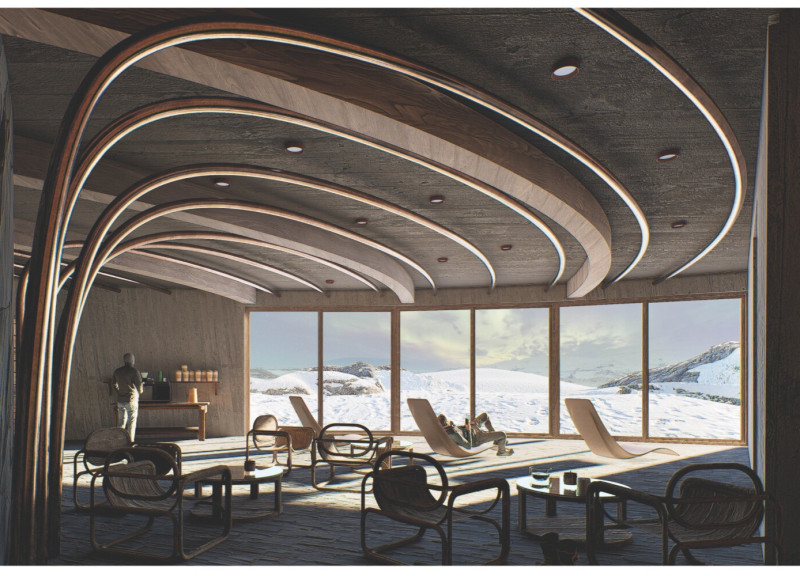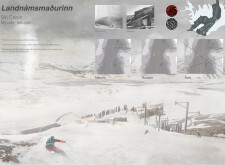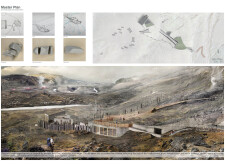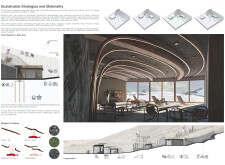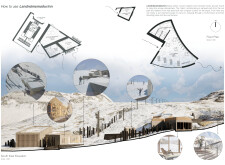5 key facts about this project
### Project Overview
The Landnám máðurinn ski cabin is situated in Mývatn, Iceland, designed to serve as a retreat for outdoor enthusiasts while fostering a deep connection to the surrounding landscape. The architecture reflects a commitment to integrating human habitation with the natural environment, capturing the dynamic relationship between man-made structures and the rugged Icelandic terrain.
### Spatial Strategy and User Experience
The layout of Landnám máðurinn is designed to facilitate exploration and interaction with the natural environment. Pathways and interconnected spaces guide users from outdoors to indoors, promoting a sense of fluidity and engagement with the site. The cabin includes designated areas for equipment storage, rest, and communal activities, enhancing the overall experience for visitors. Large windows frame views of the landscape, allowing natural light to permeate the interiors and reinforcing the bond between the occupants and their surroundings.
### Materiality and Sustainability
A focus on sustainability is evident in the thoughtful selection of materials. The use of recycled regional basalt pays homage to the volcanic heritage of Iceland, while concrete enhanced with volcanic dust improves thermal performance and reduces environmental impact. Strategic incorporation of wood adds warmth and tactile comfort, contrasting with the robustness of concrete. Geothermal systems provide efficient heating, reducing reliance on external energy sources. The exterior features corten steel elements, which will develop a weathered character over time, aligning with the local aesthetic and climate challenges.


